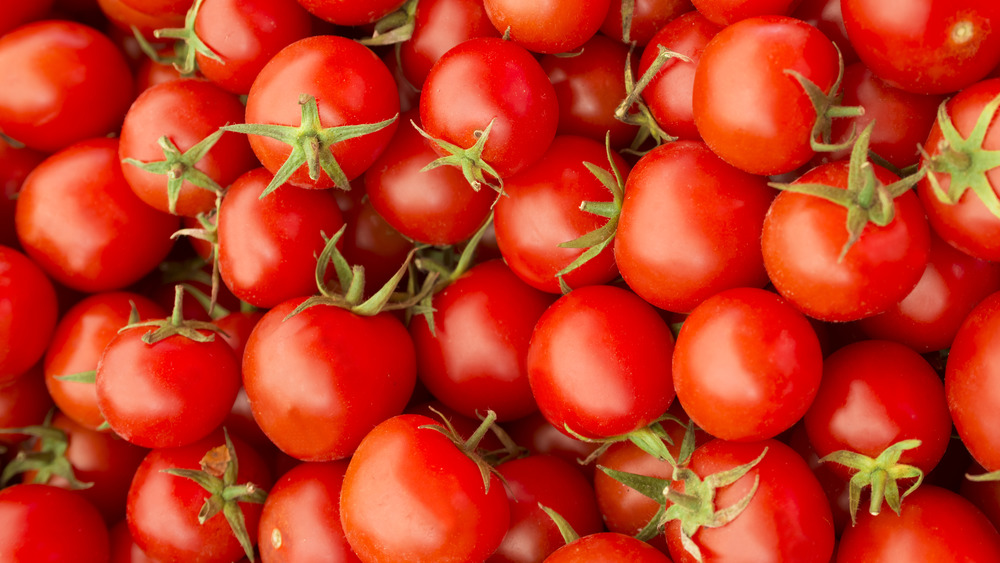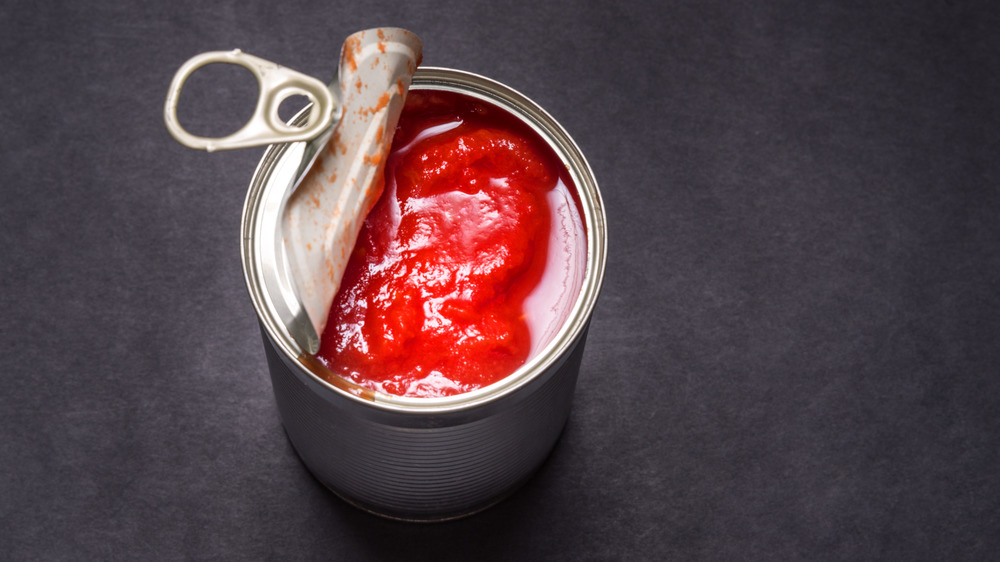Here's The Difference Between Fresh And Canned Tomatoes
You're getting ready to make a delicious pasta dish for dinner, but halfway in you realize that the recipe calls for canned tomatoes and all you have are fresh ones. Or maybe it's the other way around — you need fresh, but you only have canned. No worries. You can easily substitute one for the other, right? After all, they're both tomatoes, so they must be interchangeable. Sure, one might be diced up in a can of juices, but at the end of the day, a tomato is a tomato. Or at least that's what you'd think.
According to The Daily Meal, however, fresh tomatoes and canned tomatoes aren't exactly the same, and substituting one for the other might not be the smartest idea, depending on the recipe. So before you dig that can out of the pantry to use in place of the fresh version, stop and consider the following important information.
Canned tomatoes are better for cooking
If you've ever wondered why your favorite lasagna recipe or that Mexican rice casserole you love call for canned tomatoes instead of fresh, it's because canned tomatoes withstand heat better. The Daily Meal explains that this is due to how tightly packed the tomatoes are in the can and their higher concentration of flavor. When should you use fresh tomatoes, then? The cooking news site says that, if the tomatoes are in season and ripe, they're best used when you're looking to add a hint of freshness to a dish, like in a salad, or on top of a pizza.
That's not the only difference, either. According to the Food Network, canned tomatoes are slightly less nutritious than their fresh counterparts. During the canning process, the tomatoes lose some of their key antioxidants, fiber, and vitamin C, so while they're still good for you, eating canned tomatoes isn't as healthy as biting into a fresh tomato.

